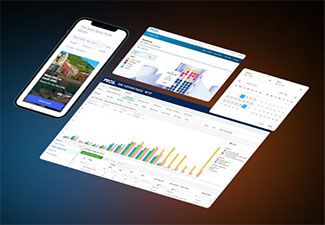SaaS In the Enterprise: A Pot of Price Premiums at the End of the SaaS Rainbow
June 12, 2014-
By Kishore Jethanandani
As the old adage of finance goes, small gains in prices reap large gains in profitability.
Price premiums, over costs, flow directly into the bottom-line. Lost opportunities for price gains abound, lurking in the blur of interdependent relationships of micro-segments, and their varying sensitivities to factors like price, pricing power, customer psychology and experience, seasonality, and network effects.
SaaS-based algorithms are peering into Gargantuan databases to disentangle the precise effects of price-determining factors. Unsuspected pricing inefficiencies are uncovered when the actual prices are lower or higher than those predicted by causal factors.
Opportunities for revenue gains are identified by finding products and services priced lower or higher than their value. The under-pricing can happen when suppliers are wrestling with conflicting goals. “Under-pricing happens when suppliers are afraid they may not otherwise be able to acquire customers at all,” Gene Hoffman, co-founder and CEO of Vindicia, told me. Comparing competitors’ pricing data, in the same segment, can dispel the fear that leads to sub-optimal pricing.
A concept like value was to some extent an academic abstraction before SaaS-based big data made it measurable. “Consumers’ willingness to pay for a product is a measure of its value. We subdivide a market into its smallest segments till we are certain we have a homogeneous cluster of customers with similar willingness to pay,” says Dr. Neil Biehn, vice president of pricing science and research at PROS Inc. “Several months of experimentation is completed to identify offers which maximize the revenue gains in a market segment.”
Willingness to pay is not necessarily an objective measure: Customers can pay more or less than the value of a product or service depending on their degree of confidence that the value they eventually receive is as stated in the offering at the outset. “When we lack information about value, we discount to cover the risk,” Steven Forth, an entrepreneur focused on providing innovative pricing solutions, told me.
Citing the example of an industrial filter company that will provide filtering-as-a-service, priced for the purity of the throughput, Forth remarked: “Increasingly, offerings will be delivered as a service because they can be instrumented to collect large volumes of data to measure the value metrics of attributes desired by individual segments of customers.”
The increasing adoption of the Internet of Things, in general, makes it possible to measure a broad variety of value metrics. “Suppliers who design in the ability to collect data that measures value will be better placed to use value-based pricing, reduce discounts based on risk, and micro-segment their markets,” says Forth.
Granular segmentation is a prerequisite for isolating the effects of the individual factors that determine prices. The traditional metrics of customer segments, such as the size of customers and their expectations of volume discounts, don’t go far enough.
“Price elasticity of demand is measured with greater accuracy when multiple attributes are factored into the segmentation of customers,” says Dick Sobel, a price optimization consultant. “Larger customers, for example, are likely to be more price-sensitive when they place orders more frequently than those who don’t.” SaaS aids the integration a broad variety of data streams and their rapid collation for analyzing segments.
Clients of SaaS solutions for pricing and segmentation can explore alternative scenarios at will, unhindered by the complexity of the technology, or paucity of data. “With SaaS, much of the price analytics is reduced to templates that business users can manipulate with ease, with access to analytics professionals for more complex situations,” notes Biehn.
Another old adage — you can’t manage what you don’t measure — needs modification in the new age of gobs of data. A lot is routinely measured in the age of pervasive M2M connectivity. The new truth is that you can’t manage when you can’t measure the interdependence of countless variables.





